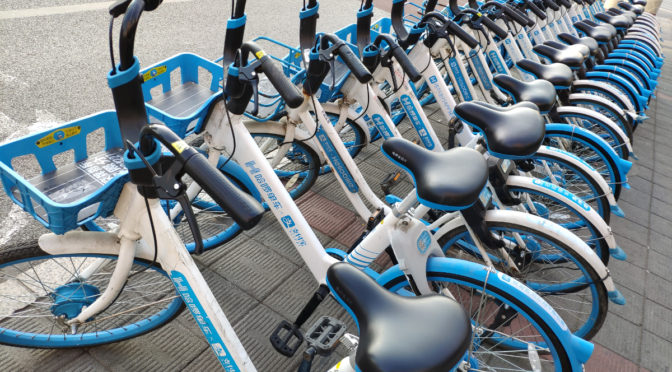In another attempt to get a bit more exercise, I’ve started to use the share bikes available around Beijing.
You’ll recall that I wrote about when these first showed up in Haidian (the university student district) when MoBike first became available. Since then, there have been many other similar services that have popped up: Ofo, Didi, Bluegogo, and HelloBike. Although they’ve been around for a while, they’ve all had their issues with finances and viability.
Mobike went through a period of refinancing and, more to the point, when I had to change my password and then my phone number, I was not longer able to access my account. As a result, I lost my 300 RMB deposit. Since then, I’ve been wary of signing up for anything else that requires a deposit of some sort. These were among the first bikes on the street and probably the most ubiquitous of all. They are coloured grey and orange.
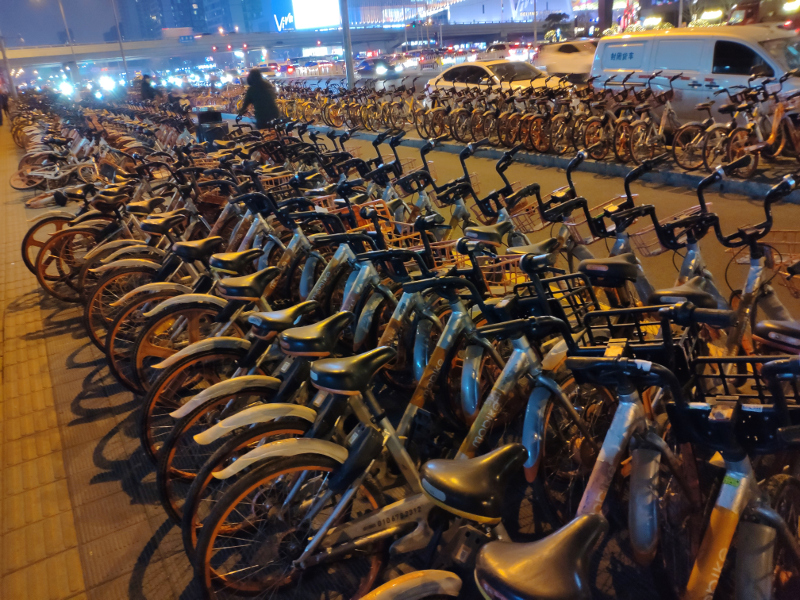
There is Ofo, the yellow bikes, and they, too, tried to expand overseas into Europe but they also failed. Apparently they’d build or buy a new bike every time signed up and so that meant there were lots of bikes around that no one was using, but that may just be rumour. To think of it, Ofo might have been first on the streets because they were the brainchild of some university students in Beijing. These guys got some backing by Xiaomi and Didi and that enabled them to push their bikes all over the country.
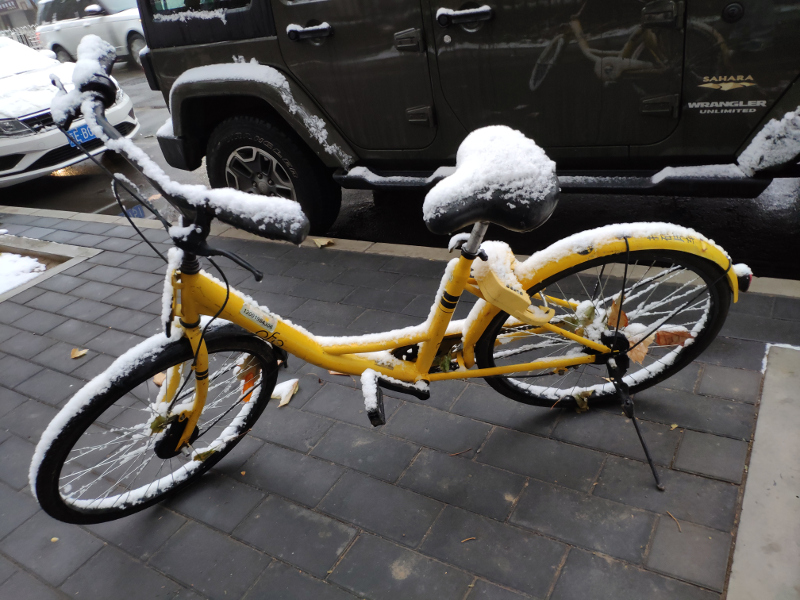
Then there were the latchers’-on Bluegogo, which appeared a few years into the bike-sharing idea but they soon ran into financial trouble. Even trying to expand into the United States couldn’t save them and they ended up selling a lot of their bikes at a discount. Oh, and they never gave back people’s deposits. They ended up getting partially bought out by Didi who was trying to expand its own ride-sharing APP.
Now there are bikes by Didi, the ride-hailing APP similar to Uber (and who actually took over Uber’s China division) but the bikes are only available on the Chinese version of the APP. This would seem to be the easiest but, even though I have a Didi account, I can’t unlock these bikes, so they are no-go for me. These bikes are kind of ugly with the teal-green and white colouring.
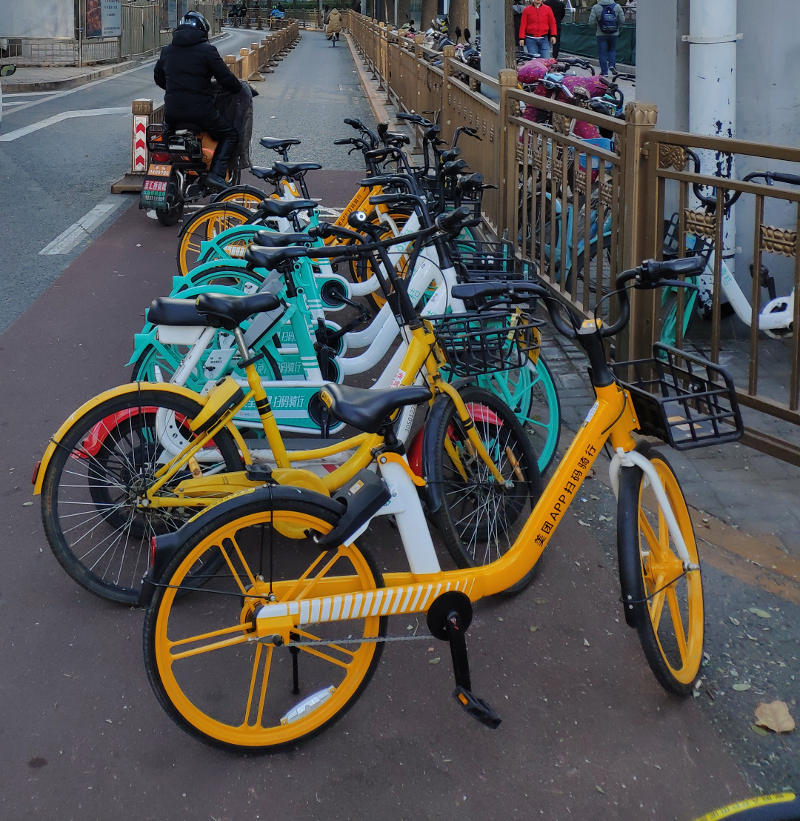
I need to give a shout out to the Beijing Bike system, the red and white bicycles, but these require some sort of key card and, of all horrors, require to be docked in a single location. That’s just not very convenient, is it?
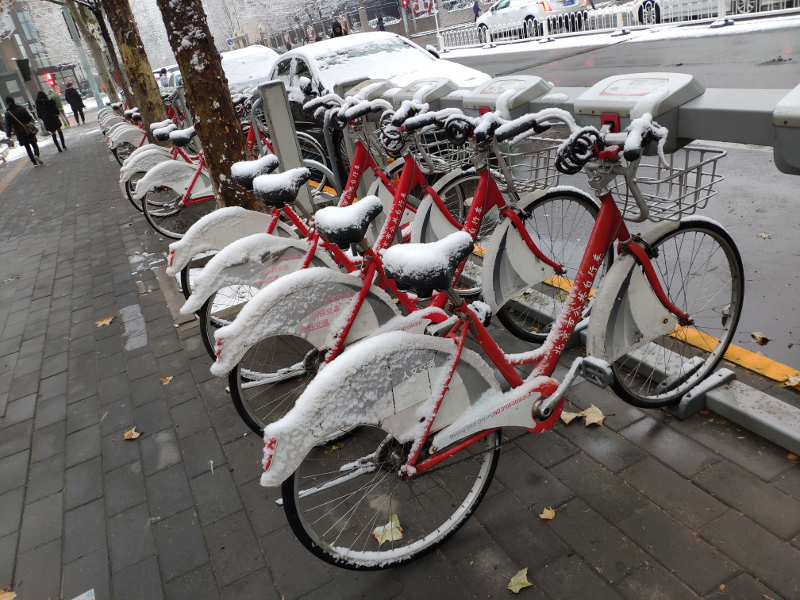
And, finally, there is HelloBike, the blue and white bikes, which is owned by Alipay, the large payment processing company here in China. It’s also the one I am able to use.
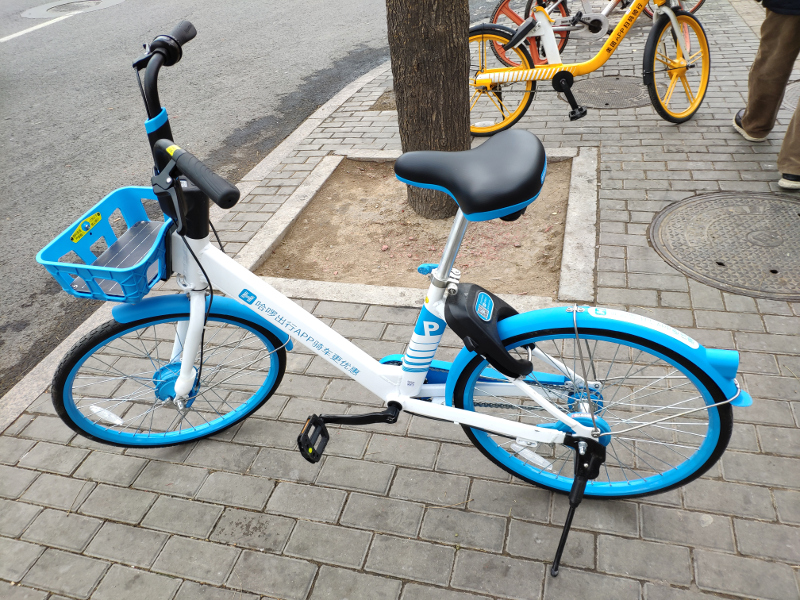
All in all, many of these bikes share some similarities that make them very easy to use.
First and foremost, they are plentiful. HelloBike isn’t as prominent as the others on the streets, but among all of the bike companies (MoBike, Ofo, Hellobike, Didi), you can always find a bike somewhere at sometime. Whether or not the bike works, that’s another question.
Second, they are dockless, which means you can park them just about anywhere so long as they are not impeding traffic or causing a safety issue. Beijing Bike, however, requires a docking station. And since “downtown Beijing” covers such a vast area, the dockless bikes can be parked in most places without any trouble. However, if you are given a warning by the bike APP that you are parking in a restricted zone, you have the choice to have someone else move it for you… for a 15RMB fee (about $3 CAD). Further, in the last few months, there have been more designated areas painted on the sidewalks where people can park these bikes.
So how do you activate these bikes? You scan a QR code with an APP and unlocks the bike wirelessly.
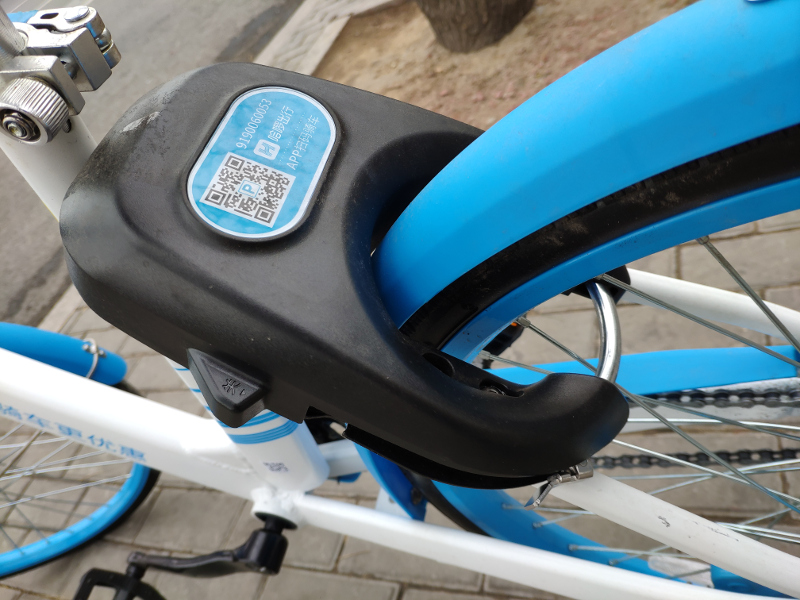
Next, all of them accept either WeChat Pay or Alipay and, as a result, are easy to scan and use very quickly. That is, as long as you are a verified user. If not, then you may be asked for your passport info or phone number or whatever and that, then, becomes an inconvenience. This is the one reason I use HelloBike because it is associated with my Alipay account and requires no further verification, unlike Ofo and MoBike.
Finally, the seats are adjustable, though not all of them work. Some of the bikes have rusted over time or the latch has broken off which means you either content yourself with cycling with your knees to your chest or you find a different bike.
Unfortunately, given the number of people using these bikes, there can be bikes that are either obviously damaged or difficult to ride only once you get going. There is a reporting feature within these bikes and so you can do a good deed by notifying the company of a defective bike. Whether or not it actually gets fixed (or just sold for scrap) remains unknown. It can also happen that the bike sometimes just won’t unlock which may mean that you have to close the APP and reopen it in order to clear the activation. You can still report that a bike is broken or not responding by taking a picture and sending it to the company.
How much do they cost? The typical cost is about 1 RMB per 10 minutes (about $0.20 CAD), so about $1 CAD per hour. And you can get most places in the city within about 15-20 minutes on bike. There are specials, however, with which you can buy a monthly pass or more and the price is heavily discounted. Currently my three-month subscription cost 33 RMB, or about $6 CAD. Not bad considering that the subway costs 3 to 5 RMB per ride and is horribly crowded.
You might think that cycling around Beijing might be difficult, and it can be, but the city has made efforts to ensure that there are bike lanes and that they are mostly free from parked cars or buses (buses and bike lanes often share the same space). Some places have “bike detours” which direct the bike (both push and motor-driven) traffic away from the vehicular traffic, but these are often circumvented by the massive amounts of people moving about the city. There have been checkstops, however, and I have been pulled over for cycling in a car-only lane, but I had no idea what the signs meant and, even though the traffic police spoke decent English, I had no idea what he meant that I couldn’t ride in this lane. Apparently there was a sign that said “cars only” and I should’ve known. Most cyclists and bikers were ticketed 20 RMB or they peddled in the other direction very quickly.
The cops aren’t the only people you have to watch our for, however. People stepping off of buses, off of curbs, changing lanes (walking) while looking at their cell phones, or cars trying to make right turns or pull our of parking lots. All of this means you are constantly breaking and usually going pretty slow. If you ever gain some speed you still need to be mindful of an unexpected pedestrian or other bike. I’ve already run into and got knocked off of my bike by a guy stepping into the bike lane around a billboard while looking at his cell phone. Profanities ensued. Karma for the ticket warning, I guess.
At any rate, I’ve enjoyed my time cycling around the city so far. Not only is it nice to get some exercise after work (average bike ride is 30 minute and burns about 250 calories), but it’s nice to see parts of the city I wouldn’t otherwise see if I was on the subway. Yes, I could take a cab, but then I’d be sitting in a cramped backseat while crawling through traffic. This way I get going a bike quicker and can get the blood moving.
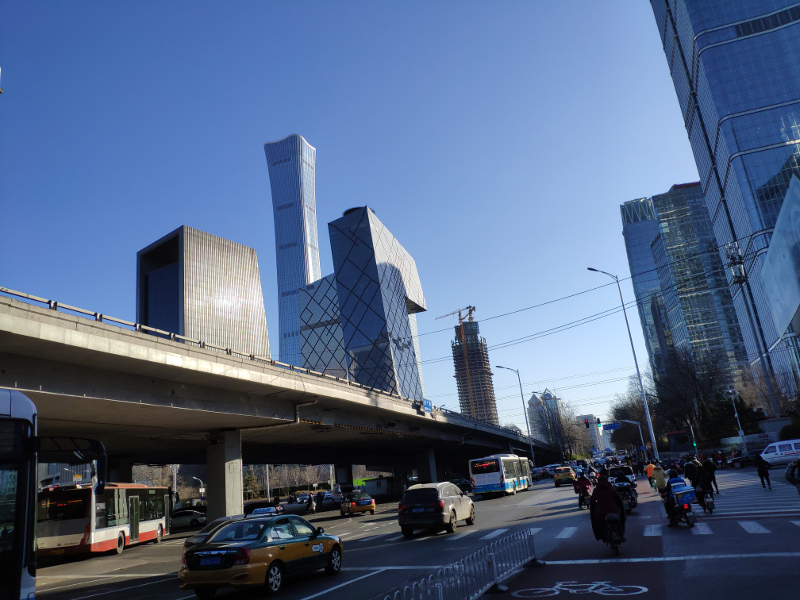
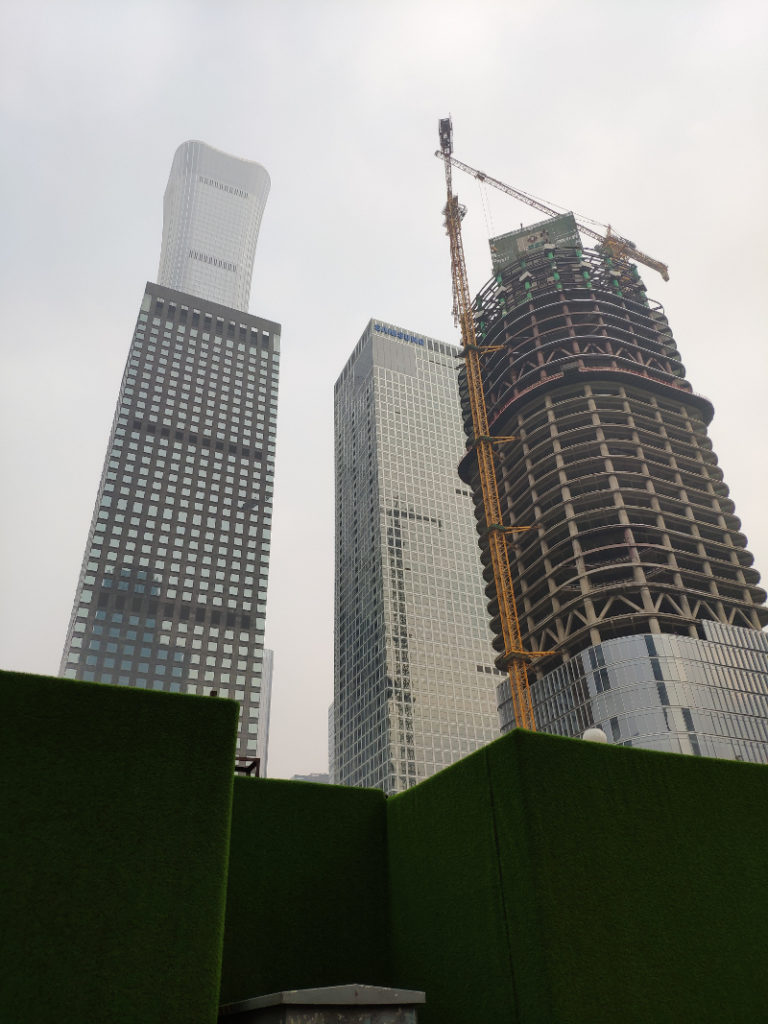
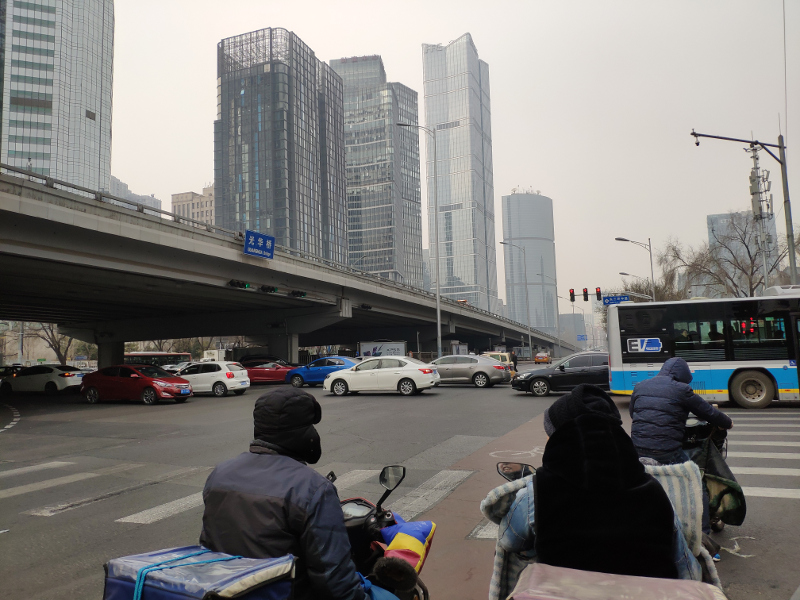
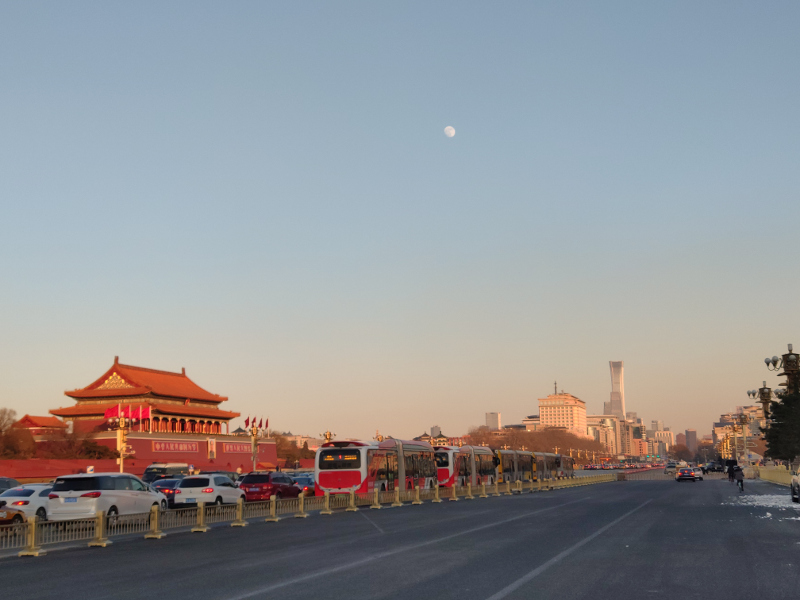
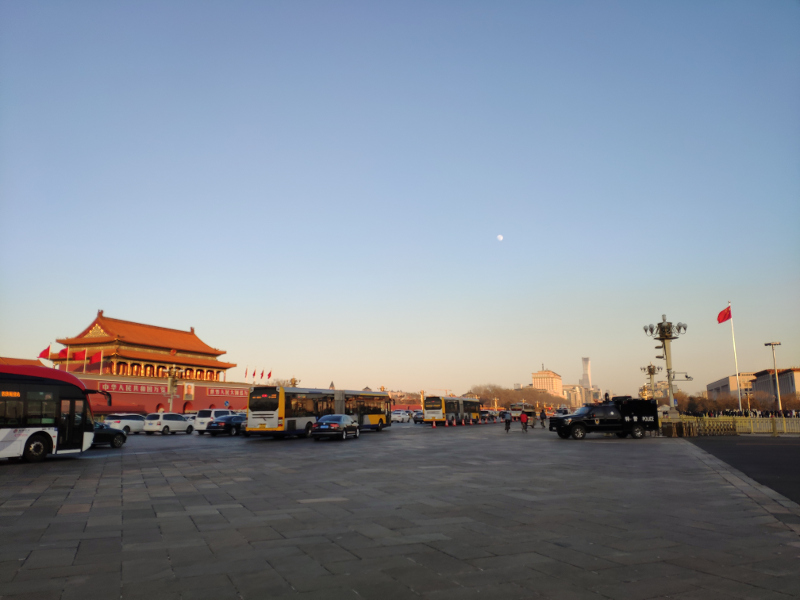
I get to pass through GuoMao (part of Beijing’s massive downtown area) and I even crossed the city from Haidian into Chaoyang, passing by the Forbidden City and Tiananmen Square along the way. I figure if I’m going to live in Beijing for the foreseeable future, I should try to see some of these things as they are “normal” and “part of city life” rather than some historical tourist destination.
I have picked quite the time to start cycling, too, now that it’s winter the cold has settled in and the wind has picked up. All this not only makes me cold but cycling is also much harder as a result. I’ve purchased some more winter gear with the hope that I can get through the next month and a half of cold without too much trouble.
I should say that the exercise isn’t very much but it does seem to add up. 30 minutes to and from work adds another 500 calories burned along the way. Furthermore, I’m still able to listen to my Chinese podcasts so I can get my Chinese listening time in while getting some exercise. Whatever the calories, this does beat getting squished into a subway car during rush hour!
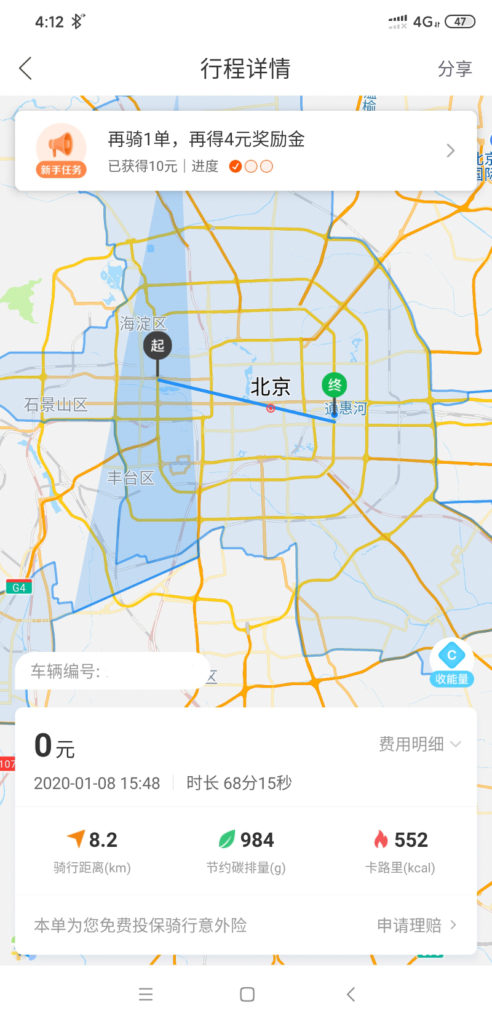
And that’s the latest effort in getting a bit more exercise!
